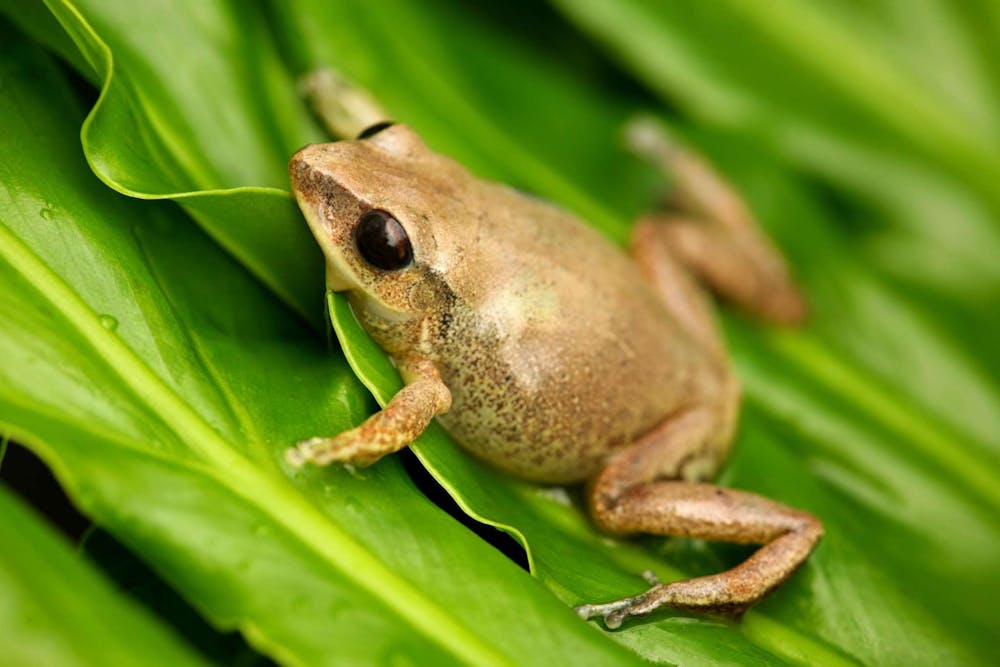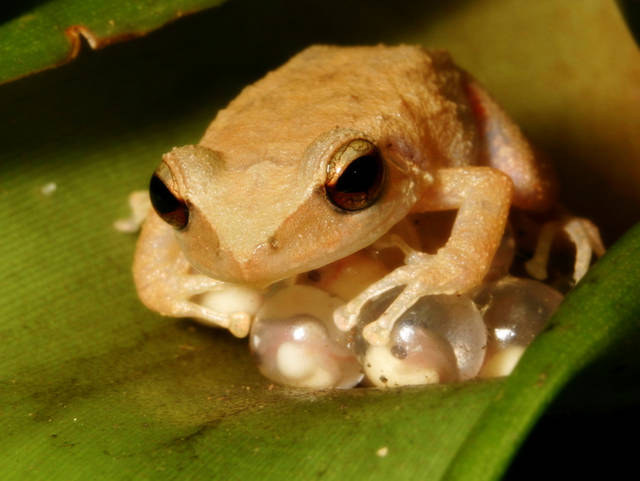The beautiful island of Puerto Rico is known for many things. From its beautiful beaches to delicious cuisines, one other thing Puerto Rico is known for is the coqui frog which some say is the island’s national symbol.
Legend has it that before the Taino Awaraks, the original inhabitants of the Caribbean islands settled in Puerto Rico, the island was filled with the coqui frog.
With time, deforestation and other climatic factors have dwindled their number and only about sixteen species remain.
Of the sixteen species, eleven of them are endemic to Puerto Rico and about thirteen of them can be found in what was previously known as the Caribbean National Forest, El Yunque National Forest.
Eleutherodactylus coqui is the scientific name for the coqui frog and Eleutherodactylus means “free toes.” Unlike other frogs, the coqui’s feet are not webbed.

This type of frog has “special disks, or toe pads, on their feet that allow them to climb up vertical.
The coqui frog is the loudest amphibian there is because the male coqui sings and its song has been measured at about 90 to 100 decibels.
As the sun sets on the island of Puerto Rico, you’d hear “ko-kee…ko-kee” right through to sunrise. The frogs got their name from their unique sound which is meant to announce to the female coqui that it’s time for reproduction. Her response is also meant to ward off invaders from her territory.
The coqui frog is a tiny frog and its females do not lay eggs in water like other frogs. Rather, they look for humid places on the island to lay their eggs. The bond between the female and male coqui is worth admiring.
After she lays her eggs, the male coqui now stands guard to protect the eggs then drives off the female coqui so it can perform its duties well. They stand guard to also protect the eggs from “predators and prevent desiccation or drying up.”

The incubation period is between 17 to 27 days after which the eggs don’t come out as tadpoles but as froglets. Another interesting fact about the coqui frog is that of the Golden Coqui.
The Golden Coqui is the only recorded frog that gives birth to its froglets like humans. The Golden Coqui doesn’t lay eggs like its other species of frogs; it fertilizes the little ones and reproduces tiny coquis with a striking resemblance to the adult coqui.
The main things that make you know they are froglets are the size and the small tail that the little froglets come with. Eventually, the tail disappears but not long after birth.

Puerto Ricans are small in stature. Like the coqui frog, they are not afraid to make their voices heard.
Perhaps this is why it is very appropriate that the coquí is Puerto Rico’s national symbol.










